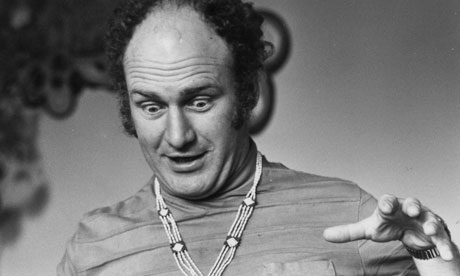Shamans
The hippies had among them some individuals who can be
considered Psychedelic Shamans. These shamans led the way, first by
experimenting themselves, then by reporting the results and promoting their
realizations in various media. Here brief biographies of the most famous
Shamans.
 |
| http://www.blotterart.net/gallery/album18/Leary |
Timothy Francis Leary (October 22, 1920 – May 31,
1996) was an American psychologist and writer, known for his advocacy of
psychedelic drugs. During a time when drugs such as LSD and psilocybin were
legal, Leary conducted experiments at Harvard University
Leary believed LSD showed therapeutic potential for
use in psychiatry. He popularized catchphrases that promoted his philosophy
such as "turn on, tune in, drop out"; "set and setting";
and "think for yourself and question authority". He also wrote and
spoke frequently about transhumanist concepts involving space migration,
intelligence increase and life extension (SMI²LE), and developed the
eight-circuit model of consciousness in his book Exo-Psychology (1977).
During the 1960s and 1970s, he was arrested often
enough to see the inside of 29 different prisons worldwide. President Richard
Nixononce described Leary as "the most dangerous man in America
In his sixties, he was with no home, no job, no credit
and dwindling credibility. He moved to Los-Angeles and started socializing in Hollywood circles, a natural evolution for those
attempting to alter perception. He believed that Hollywood
His lectures became multi-media extravaganzas with
live video and music, entitled “Just Say Know”.
His books became graphic novels, focusing on the World Wide Web. He
increased his daily diet to consist of 30 cigarettes, one marijuana biscuit,
one bonghit, half a cup of coffee, and a great deal of nitrous oxide.
Dr. Leary died of inoperable prostate cancer, and he’d
planned an elaborate death ritual for himself. He’d set up web-cams where fans
of his work could watch him commit suicide in real time. Instead he died in his
sleep, uttering the last words: “why not”.
Later, his ashes were loaded into the same 9x12 inch
canister containing the remains of Star Trek creator Gene Roddenberry and blasted
into space on the Pegasus Rocket.
Sources:
 | ||
| http://www.guardian.co.uk/film/2011/nov/24/ken-kesey-magic-trip
Ken Kesey was one of
Kesey was born on September 17,
He published One Flew Over the Cuckoo's Nest in 1962 and the quintessential
Considered a founding father of the 1960s counterculture, Kesey promoted drug use as a path to individual freedom. He founded a group known as the Merry Pranksters whowere notorious for their “acid tests”.
In 1965, Kesey's drug use landed him in jail for six months. Upon his release, Kesey moved to a farm near
Sources:
Carlos Castaneda (December 25, 1925 – April 27, 1998)
was a Peruvian-born American author. Immigration records for Carlos Cesar Arana
Castaneda indicate that he was born on December 25,
Starting with The Teachings of Don Juan in 1968,
Castaneda wrote a series of books that describe his purported training in
traditional Mesoamerican shamanism. His 12 books have sold more than 8 million copies
in 17 languages. The books and Castaneda, who rarely spoke in public about his
work, have been controversial for many years. Supporters claim the books are
either true or at least valuable works of philosophy and descriptions of
practices, which enable an increased awareness. Academic critics claim the
books are works of fiction, citing the books' internal contradictions,
discrepancies between the books and anthropological data, alternate sources for
Castaneda's detailed knowledge of shamanic practices and lack of corroborating
evidence.
Castaneda died on April 27,
Sources:
|

Комментариев нет:
Отправить комментарий